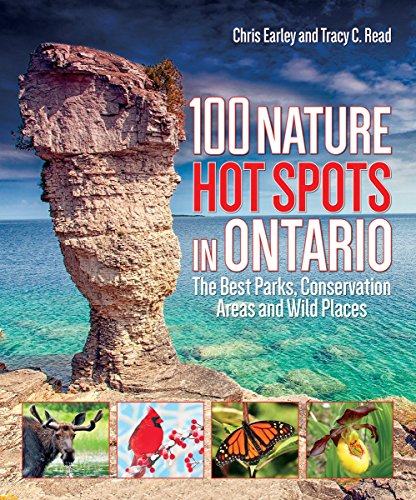100 Nature Hot Spots in Ontario is a reader-friendly guidebook that explores the remarkable splendor and diversity of the province named after the Iroquois word for "beautiful water." True to form, many of the hot spots feature water.
Organized by region, each hot-spot entry includes a descriptive destination profile, a sidebar of at-a-glance information about special features, location details, and a color photograph. Some of these locations are surprisingly close to towns and cities; some are hidden city treasures; and many are ideal for a day trip.
Here are a few examples:
Southwestern Ontario -- Rock Glen Conservation's fossil beds, trails and Carolinian forest; Luther Marsh Wildlife Management Area's northern flying squirrels, Butler's garter snakes, and spotted turtles; Pelee Island's breeding marsh birds and world-renowned annual songbird migration Niagara Region -- City of Waterfalls in the Devil's Punch Bowl; passerine bird watching in the Woodend Conservation Area; Niagara Glen Nature Reserve's unique microclimate and plants South Central Ontario -- the Scarborough Bluffs' rock formations; the Minesing Wetlands' network of sensitive flora and fauna North Central Ontario -- The towering cedars and cliffs of Bruce Peninsula Park; Flowerpot Island's orchids; Huckleberry Rock, the oldest in the world; the primeval Barron Canyon Eastern Ontario -- Wintertime sightings of snowy owls, hawks and coyotes on Amherst Island; geological eras collide in Frontenac Provincial Park; the largest known concentration of Aboriginal rock carvings in Canada at Petroglyphs Provincial Park Northwestern Ontario -- Agate Island Beach, one of Travel and Escape Network's natural wonder beaches; Ouimet Canyon with rare arctic plants growing at its base; spectacular 130 feet (40 m) plummet of Kakabeka Falls. These family-friendly destinations will appeal to naturalists, budding botanists and biologists, photographers, hikers, campers and paddlers.















